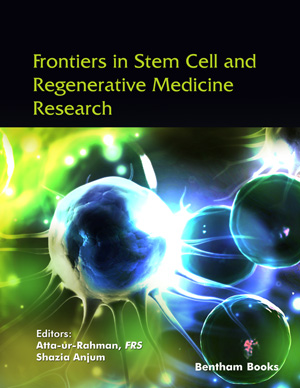Abstract
Alzheimer’s disease (AD) is considered one of the most complicated neurodegenerative disorders, and it is associated with progressive memory loss and remarkable neurocognitive dysfunction that negatively impacts the ability to perform daily living activities. AD accounts for an estimated 60-80% of dementia cases. AD's previously known pathological basis is the deposition of amyloid β (Aβ) aggregates and the formation of neurofibrillary tangles by tau hyperphosphorylation in the cell bodies of neurons that are located in the hippocampus, neocortex, and certain other regions of the cerebral hemispheres and limbic system. The lack of neurotransmitter acetylcholine and the activation of oxidative stress cascade may also contribute to the pathogenesis of AD. These pathological events can lead to irreversible loss of neuronal networks and the emergence of memory impairment and cognitive dysfunction that can engender an abnormal change in the personality. AD cannot be cured, and to some extent, the prescribed medications can only manage the symptoms associated with this disease. Several studies have reported that the regenerative abilities of neural stem/progenitor cells (NSCs) remarkably decline in AD, which disturbs the balancing power to control its progression. Exogenous infusion or endogenous activation of NSCs may be the ultimate solution to restore the neuronal networks in the brain of AD patients and regenerate the damaged areas responsible for memory and cognition. In this mini-review, we will touch upon the fate of NSCs in AD and the utilization of neurogenesis using modified NSCs to restore cognitive functions in AD.
Keywords: Alzheimer’s disease, Neural stem cells, Pathogenesis, Neurogenesis, Neuroinflammation, Repair
Graphical Abstract
[http://dx.doi.org/10.1186/s13024-019-0333-5] [PMID: 31375134]
[http://dx.doi.org/10.1016/j.jorganchem.2020.121542]
[http://dx.doi.org/10.1007/s11030-022-10422-8] [PMID: 35397086]
[http://dx.doi.org/10.1002/ardp.202000282] [PMID: 33155700]
[http://dx.doi.org/10.1146/annurev.ne.17.030194.002421] [PMID: 8210185]
[http://dx.doi.org/10.1002/cbdv.202000958] [PMID: 33620128]
[http://dx.doi.org/10.1007/s11696-019-00988-3]
[http://dx.doi.org/10.1089/jpm.2009.0059] [PMID: 19622011]
[http://dx.doi.org/10.1523/JNEUROSCI.22-03-00629.2002] [PMID: 11826091]
[http://dx.doi.org/10.1016/j.semcdb.2019.02.002] [PMID: 30822497]
[http://dx.doi.org/10.1152/physrev.00004.2014] [PMID: 25287858]
[http://dx.doi.org/10.1523/JNEUROSCI.18-09-03206.1998] [PMID: 9547229]
[http://dx.doi.org/10.1523/JNEUROSCI.1731-05.2005] [PMID: 16177036]
[http://dx.doi.org/10.1016/j.npep.2015.06.008] [PMID: 26149638]
[http://dx.doi.org/10.3389/fnagi.2019.00034] [PMID: 30890929]
[http://dx.doi.org/10.1016/S0891-5849(96)00629-6] [PMID: 9165306]
[http://dx.doi.org/10.1017/s1092852900014164] [PMID: 16273023]
[http://dx.doi.org/10.1016/j.bioorg.2021.105009] [PMID: 34052739]
[http://dx.doi.org/10.1038/s41392-019-0063-8] [PMID: 31637009]
[http://dx.doi.org/10.3233/JAD-2010-1221] [PMID: 20061647]
[http://dx.doi.org/10.1016/j.arr.2021.101451] [PMID: 34450351]
[http://dx.doi.org/10.1038/ncomms4037] [PMID: 24390130]
[http://dx.doi.org/10.1371/journal.pone.0035133] [PMID: 22529981]
[http://dx.doi.org/10.3389/fnmol.2020.600084] [PMID: 33488358]
[http://dx.doi.org/10.1046/j.1471-4159.1997.68010255.x] [PMID: 8978733]
[PMID: 26207229]
[http://dx.doi.org/10.3389/fneur.2019.01312] [PMID: 31998208]
[http://dx.doi.org/10.1016/j.ibror.2016.12.002] [PMID: 30135928]
[http://dx.doi.org/10.1002/msj.20157] [PMID: 20101720]
[http://dx.doi.org/10.1080/23262133.2017.1300037] [PMID: 28516107]
[http://dx.doi.org/10.1098/rstb.2006.2012] [PMID: 17282991]
[http://dx.doi.org/10.1016/j.ceb.2012.01.010] [PMID: 22342580]
[http://dx.doi.org/10.1002/ajmg.c.30049] [PMID: 15806586]
[http://dx.doi.org/10.3389/fncel.2021.811852] [PMID: 35197824]
[http://dx.doi.org/10.1038/nrm3591] [PMID: 23698583]
[http://dx.doi.org/10.3389/fnagi.2020.00247] [PMID: 32848716]
[http://dx.doi.org/10.1016/j.stem.2019.05.003] [PMID: 31130513]
[http://dx.doi.org/10.1016/S0079-6123(07)63039-8]] [PMID: 17765747]
[http://dx.doi.org/10.18632/oncotarget.13776] [PMID: 27926491]
[http://dx.doi.org/10.1016/j.ajpath.2012.02.012] [PMID: 22510327]
[http://dx.doi.org/10.1038/cddis.2017.89] [PMID: 28333144]
[http://dx.doi.org/10.1371/journal.pone.0084547] [PMID: 24416243]
[http://dx.doi.org/10.1016/j.celrep.2019.01.023] [PMID: 30699343]
[http://dx.doi.org/10.1016/j.stem.2015.05.014] [PMID: 26119235]
[http://dx.doi.org/10.1038/emm.2013.125] [PMID: 24232259]
[http://dx.doi.org/10.1177/1073858420914509] [PMID: 32242761]
[http://dx.doi.org/10.1186/s13041-019-0525-5] [PMID: 31801553]
[http://dx.doi.org/10.4049/jimmunol.179.6.4249] [PMID: 17785865]
[http://dx.doi.org/10.1096/fj.09-146456] [PMID: 20207941]
[http://dx.doi.org/10.1007/s12035-018-1342-z] [PMID: 30225776]
[http://dx.doi.org/10.12779/dnd.2017.16.4.121]
[http://dx.doi.org/10.3233/JAD-2010-101020] [PMID: 20847424]
[http://dx.doi.org/10.3390/antiox10071088] [PMID: 34356321]
[http://dx.doi.org/10.1007/s00018-008-8053-y] [PMID: 18500448]
[http://dx.doi.org/10.1038/3305] [PMID: 9809557]
[http://dx.doi.org/10.1002/cne.901240303] [PMID: 5861717]
[http://dx.doi.org/10.3390/ijms21030701] [PMID: 31973106]
[http://dx.doi.org/10.1016/j.stem.2020.07.002] [PMID: 32726579]
[http://dx.doi.org/10.1073/pnas.1813205115] [PMID: 30352848]
[http://dx.doi.org/10.1523/JNEUROSCI.1305-10.2010] [PMID: 20844121]
[http://dx.doi.org/10.2174/138161212799315795] [PMID: 22288401]
[http://dx.doi.org/10.1523/JNEUROSCI.5226-10.2011] [PMID: 21228148]
[http://dx.doi.org/10.3390/ijms20174272] [PMID: 31480448]
[http://dx.doi.org/10.4103/1673-5374.314324] [PMID: 34100451]
[http://dx.doi.org/10.3390/ijms21093103] [PMID: 32354178]
[http://dx.doi.org/10.1182/blood-2015-09-668251] [PMID: 27020088]
[http://dx.doi.org/10.3390/cells11091464] [PMID: 35563770]
[http://dx.doi.org/10.3389/fneur.2020.00148] [PMID: 32265815]
[http://dx.doi.org/10.1016/S0014-4886(03)00183-3] [PMID: 14552902]
[http://dx.doi.org/10.3389/fneur.2020.00344] [PMID: 32411087]
[http://dx.doi.org/10.1091/mbc.e11-01-0053]
[http://dx.doi.org/10.3390/app10144852]
[http://dx.doi.org/10.1186/2052-8426-2-19] [PMID: 26056586]
[http://dx.doi.org/10.1186/s40824-018-0138-6] [PMID: 30275970]
[http://dx.doi.org/10.1155/2021/7381980]
[http://dx.doi.org/10.1016/j.polymer.2008.01.027]
[http://dx.doi.org/10.3390/molecules27092902] [PMID: 35566251]
[http://dx.doi.org/10.3389/fbioe.2021.724158] [PMID: 34712651]
[http://dx.doi.org/10.3389/fbioe.2020.00389] [PMID: 32432095]
[http://dx.doi.org/10.1098/rsfs.2012.0016]
[http://dx.doi.org/10.3389/fbioe.2020.00984] [PMID: 32984278]
[http://dx.doi.org/10.1016/j.csbj.2018.10.011] [PMID: 30455858]
[http://dx.doi.org/10.3390/ijms222312662] [PMID: 34884467]
[http://dx.doi.org/10.1007/s12035-015-9448-z] [PMID: 26427854]
[PMID: 33841671]
[http://dx.doi.org/10.1016/j.stemcr.2018.04.024]
[http://dx.doi.org/10.1111/ejn.15363] [PMID: 34192824]
[http://dx.doi.org/10.4103/1673-5374.251188] [PMID: 30804235]
[http://dx.doi.org/10.3389/fnagi.2021.650103] [PMID: 33776747]
[http://dx.doi.org/10.1073/pnas.0901402106] [PMID: 19633196]
[http://dx.doi.org/10.3390/cells11050846] [PMID: 35269466]
[http://dx.doi.org/10.1038/srep39340] [PMID: 28051110]
[http://dx.doi.org/10.1007/s10238-015-0375-0] [PMID: 26188488]
[http://dx.doi.org/10.1007/s12272-016-0799-4] [PMID: 27515053]
[http://dx.doi.org/10.1002/advs.202002944] [PMID: 33854883]
[http://dx.doi.org/10.1155/2021/7834421] [PMID: 34512767]
[http://dx.doi.org/10.3390/membranes11100796] [PMID: 34677562]
[http://dx.doi.org/10.1007/s12015-021-10254-3] [PMID: 35107767]
[http://dx.doi.org/10.3390/cells10071802] [PMID: 34359972]
[http://dx.doi.org/10.1038/s41591-019-0375-9] [PMID: 30911133]
[http://dx.doi.org/10.1111/j.1460-9568.2008.06398.x] [PMID: 18717733]
[http://dx.doi.org/10.1523/JNEUROSCI.4767-10.2011] [PMID: 21325529]
[http://dx.doi.org/10.1523/JNEUROSCI.0156-06.2006] [PMID: 16554469]
[http://dx.doi.org/10.1523/JNEUROSCI.2723-06.2006] [PMID: 16988041]
[http://dx.doi.org/10.1038/sj.npp.1301137] [PMID: 16823390]
[http://dx.doi.org/10.1002/hipo.22794] [PMID: 28833933]
[http://dx.doi.org/10.1016/j.diff.2009.06.005] [PMID: 19616885]
[http://dx.doi.org/10.1111/j.1471-4159.2007.04499.x] [PMID: 17403034]
[http://dx.doi.org/10.1074/jbc.M703099200] [PMID: 17488716]
[http://dx.doi.org/10.1016/j.neurobiolaging.2013.04.026] [PMID: 23731954]
[http://dx.doi.org/10.1002/stem.626] [PMID: 21381151]











